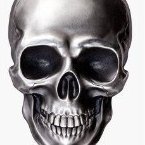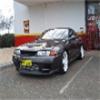Degreeing Camshafts
Announcements
-
Similar Content
-
Latest Posts
-
@soviet_merlin Thanks mate! Nothing too major but will hold me up for a while. I've got lymphomas to get taken off the back of my neck and the middle of my spine which always conjures scary thoughts! It sounds worse than it is. Yeah great, conjuring more rabbit hole deepening , just what I need! 🤣
-
I'd argue the F50 kit I got is very good value. For ~2k I got the calipers (refurbed condition), adapters, pads, brake lines, rotors, and top hats. I think you'd be pretty hard to get Evo/GTR/350z brembos + the additional hardware for similar money. Used market for a pair of front calipers alone I've seen tend to run anywhere from $1500-2000 depending on condition. That said, something like a GTR or 350z brembo is a lot easier to adapt to the Silvia.
-
Is there a significant price difference between the Evo/gtr/350z brembos vs the F50? Looks amazing.
-
By Dose Pipe Sutututu · Posted
I was actually being a tightarse at the time LOL... My OCD is tickling me into running a 2nd 8AN Teflon hose all the way down and removing the 2x OEM hardlines. My other side of my brain is telling me to run 2x hardlines front to back (also acts as a fuel cooler, so win win). -
As I mentioned in an earlier post, I had some trouble with the Silvia's brakes dragging back in 2023. I managed to sort it out then, but the same problem came back to bite me late last year. Just take a look at the picture – I had a feeling the handbrake was acting up again, and I was right. Anyway, I'd been wanting to upgrade to bigger brakes for a while. Not that the Silvia's brakes were bad, but it was more of a "want" than a "need", you know? It was funny, though – at the time, I couldn't find any Evo Brembos, 350Z Brembos, or GTR Brembos for a decent price (of course, tons of them popped up online after I already bought my kit!). I ended up going with an F50 Brembo kit, which came with adapters, brake lines, 330mm rotors, and top hats. The F50 Brembo caliper was used in a few other cars too, like the FPV. I also decided this was the perfect opportunity to ditch the Silvia's ridiculous rear brakes and that awful handbrake (some of you were definitely right about that!). I picked up some R33 calipers and all the necessary bits – rear drums, backing plates, and new hardware to refurbish the calipers. Of course, it wouldn't be a project without a few hiccups. Turns out the brake master cylinder was playing up and basically (to put it simply) keeping the brakes engaged. I had it overhauled, and after some adjustments, everything was working again. The whole process took a while, as you can imagine. To top it off, the front right wheel bearings were shot and needed replacing too. This is a rare occasion where I'm posting an update while it's all still fresh! These pictures were taken just this afternoon.
-







Recommended Posts
Create an account or sign in to comment
You need to be a member in order to leave a comment
Create an account
Sign up for a new account in our community. It's easy!
Register a new accountSign in
Already have an account? Sign in here.
Sign In Now